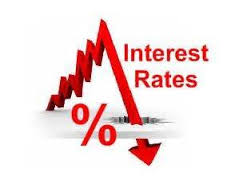So, Easter has come and gone. You’ve enjoyed your four day long weekend, done the obligatory egg hunts with the children, overindulged in chocolate and you’ve just finished your last Easter egg. Now, it might be time to consider a different type of egg. Your superannuation or retirement nest egg.
Most people don’t think about their superannuation retirement nest eggs until retirement is almost imminent.
Many people, particularly young people, are busy living their lives and think that their retirement is such a long way off in the future, so they don’t pay any attention to their superannuation or think they’ll focus on it when they’re closer to retirement.
Because it’s “invisible money”, money that you don’t really see regularly and can’t easily get your hands on, it’s often not on our radar.
But the sooner you start thinking about your retirement and your superannuation or other payout, the more time you have to be able to grow it. You have many options earlier on, but they become more limited as time passes and it’s often too late if you’re retiring in a couple of years.
With many people finding they will not have sufficient funds in their superannuation upon retirement, you might like to think about the lifestyle you would like to have in retirement and ask yourself a few questions.
Do you want better than just the basic lifestyle that some experts say will be the norm for many retirees?
Do you think you might not have enough in your superannuation to last you throughout your retirement?
What is your magic number? That is, how much would you like to receive annually in order to have a comfortable retirement?
How do you envisage your lifestyle? Do you want to travel, around Australia or overseas, or are you happy just to live in your beachside or country cottage? Do you want to live in the city, a regional area or even overseas?
You might not be ready to retire when you reach your retirement age. You could continue working if you wanted to, particularly if you don’t have a lot in your superannuation. Perhaps you could supplement your income by working at something you really love or at something you’ve always wanted to do.
Alternatively, you could volunteer at charity shops or become an official greeter at airports or be a tour guide in your city.
Some things to consider for your retirement:
Your number: Calculate your magic number as per above, or know what lump sum you require to provide you with the income you need. Come up with some ideas on how you are going to attain this figure.
- Take an interest: If you have an employer paid superannuation fund, go through your statement every time you get one. How is your fund performing? Could you change to another better performing one, either within the fund or with another provider? How much are your annual fees? Is your insurance adequate?
- Boost your superannuation contributions: As soon as you start working, or as soon as you can, salary-sacrifice another one percent of your before-tax salary into your superannuation. Consider increasing this percentage regularly. Now is a good time to look at lump sum payments, before the end of financial year.
- Alternative and passive income: Start looking at how you can create alternative streams of income in addition to your job, preferably passive, that can continue after you retire.
- Continuously evaluate your fund: There are a number of sites that can compare your fund with other funds so you can monitor performance.
Statistically, an overwhelming number of people will not have sufficient funds in their super fund when they retire, facing the risk of running out funds before running out of retirement.
Considering our extended life expectancies, we will require more money when we retire rather than less. The earlier you can address this, the better.
You don’t want to be in the situation where you’re planning to retire in five years and realise you won’t have sufficient funds in your superannuation account.














